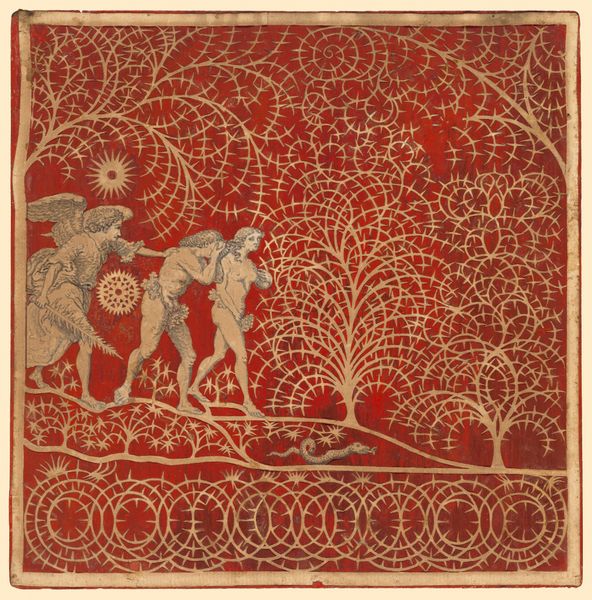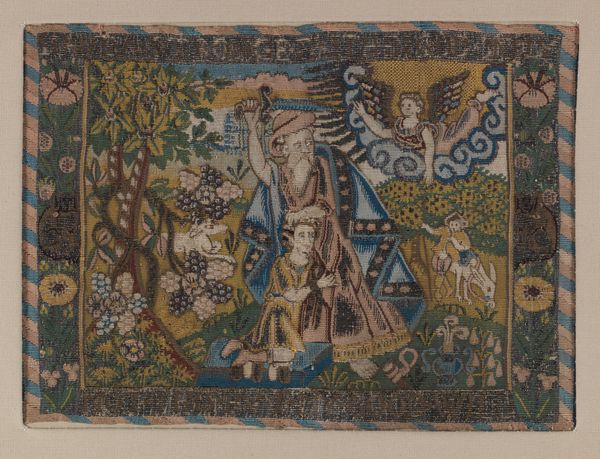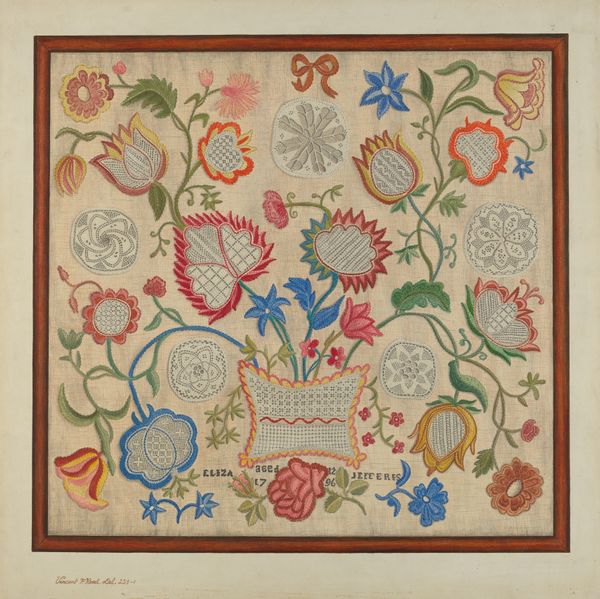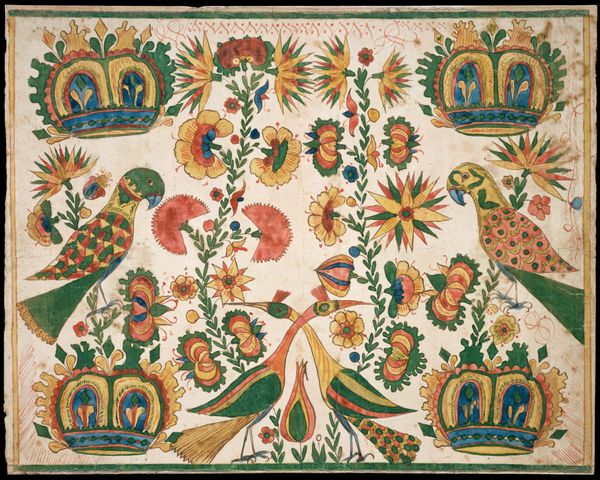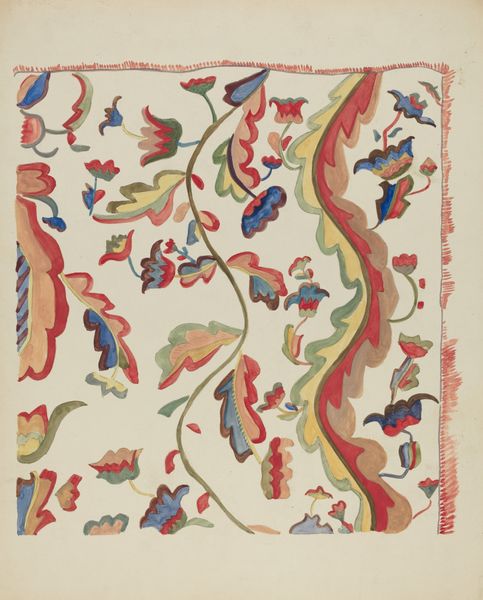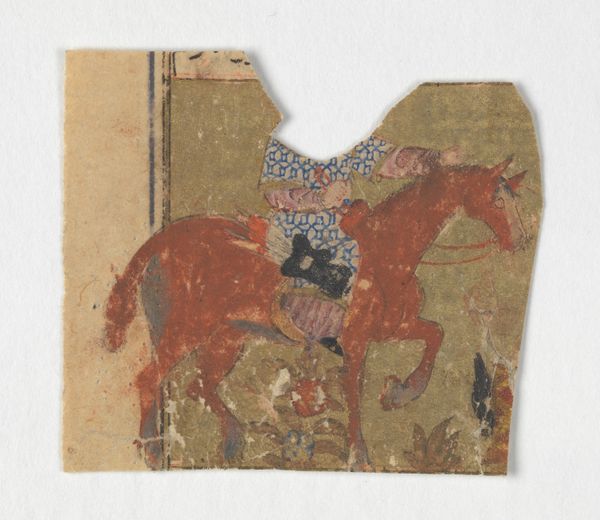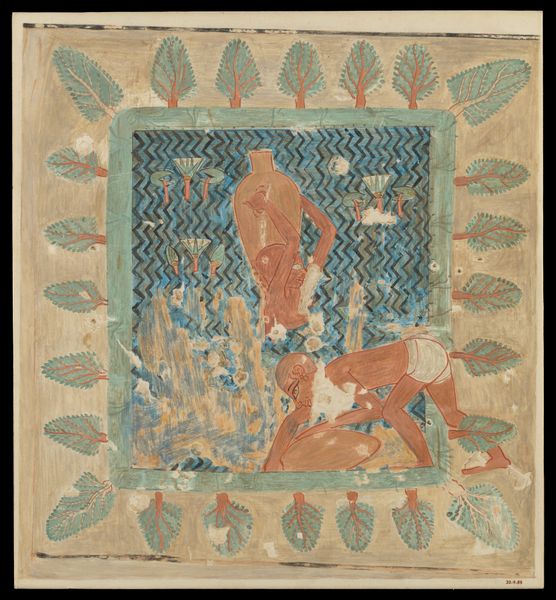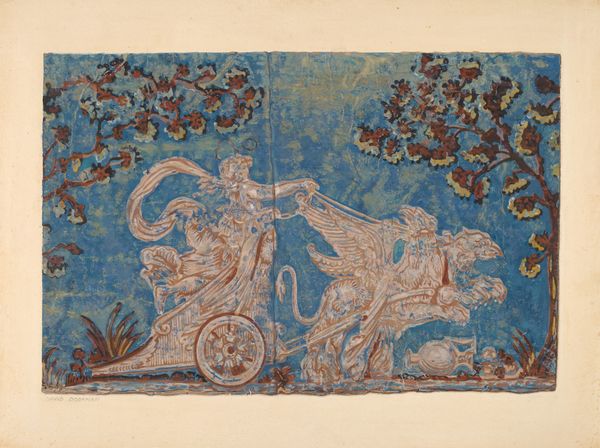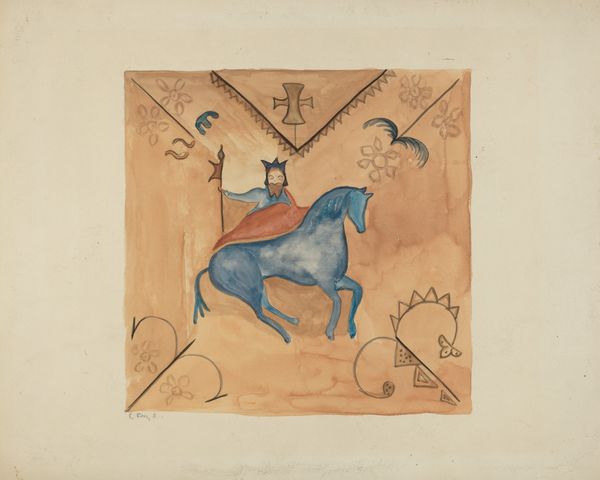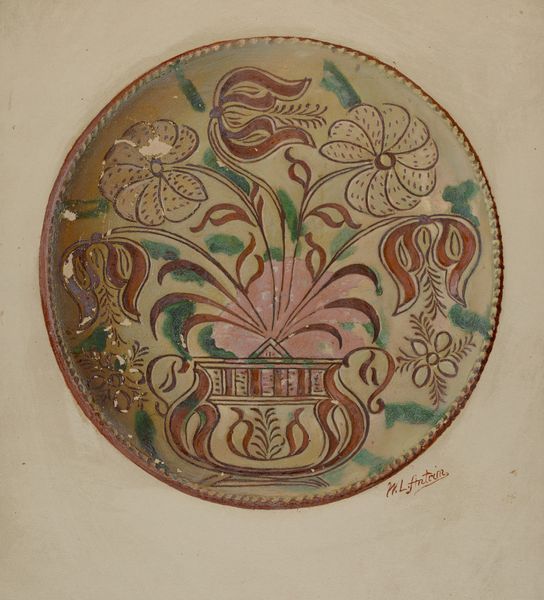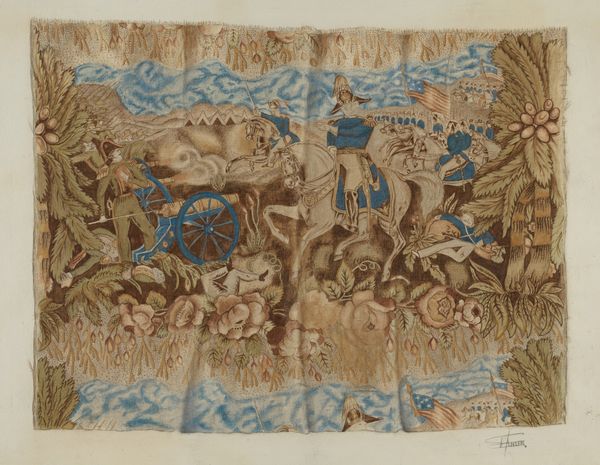
Dimensions: overall: 31.6 x 29.2 cm (12 7/16 x 11 1/2 in.) Original IAD Object: none given
Copyright: National Gallery of Art: CC0 1.0
Curator: E. Boyd created this whimsical painted chest between 1935 and 1942, titled "Chest of Native Pine, Painted in Oil". It’s a unique example of the era’s folk-art revival. Editor: The chromatic intensity certainly strikes you right away, it gives an almost otherworldly glow. I find it so intriguing how the green almost vibrates. Curator: Yes, there’s a clear intention here; a structured rhythm, you might even say, established through the repetition of forms, horses and stylized floral motifs. It is framed too, so to speak. Editor: The border work feels key, emphasizing a tangible, crafted presence; It highlights Boyd's method in the selection and manipulation of the material and process—that simple native pine being utterly transformed through labor. Curator: Precisely. The interplay between the two-dimensional painted surface and the illusion of depth is conceptually fascinating. We're presented with a carefully considered composition—a self-aware performance of depth, but never really depth at all. Editor: More like a surface teeming with vibrant life. One might even argue this approach democratizes artistry itself. Every element reflects skill and an intrinsic connection to the raw materials. It bridges art with handwork and a kind of resourceful charm. Curator: Absolutely. The reduction of perspective enhances the painting’s overall decorative effect. Its charm and, you might say, "folk" aspect derive from this studied naivety. I also admire the execution in what she is not painting–how she creates form with the spaces in between objects, the negative spaces defining the subjects. Editor: A fascinating tension indeed! You recognize both the individual mark of the artist, while at the same time apprehending a tradition embedded within community, and its values. It transforms something modest into a vessel, you might say, bursting with collective dreams and labors. Curator: I'm left appreciating how E. Boyd manipulated compositional and theoretical concerns of painting into something so visually alluring. Editor: And for me, thinking about the work that makes even the most "simple" folk art, as this is described, expands into an examination of labor, place, and belonging.
Comments
No comments
Be the first to comment and join the conversation on the ultimate creative platform.

